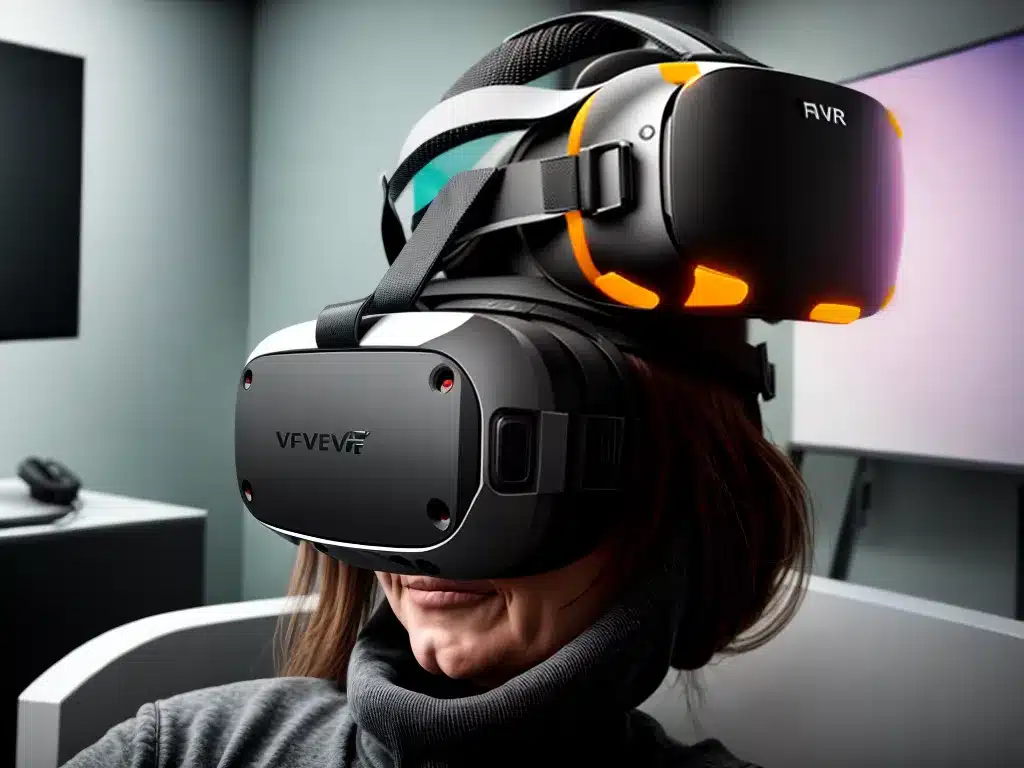
What is Foveated Rendering?
Foveated rendering is a graphics rendering technique that uses eye tracking to determine where the user is looking in the virtual environment and then renders that focal area at full resolution while reducing the resolution in the peripheral areas. This allows for a substantial performance boost by lowering the overall number of pixels rendered without sacrificing visual fidelity where it matters most.
The human eye can only see fine details in the very center of our field of view. The edges of our vision are far less discerning. Foveated rendering takes advantage of this fact by strategically reducing rendering work where the user won’t notice the lowered resolution.
How Foveated Rendering Works
Foveated rendering requires eye tracking to determine the gaze direction of the user. This allows the system to identify the foveal region, which covers about 2 degrees of vision. This small area is rendered at full resolution. Outside the foveal area, resolution is lowered progressively until reaching very low resolution at the peripheral edges.
Eye tracking hardware mounted on the VR headset provides real-time gaze data to the rendering system. Image analysis algorithms use this data to build a gaze-centered foveal map. The system uses this map to apply appropriate resolution levels across the rendered image before sending it to the headset display.
The resolution drop-off is graduated, with inner areas around the fovea maintaining higher resolution than outer areas. Well-designed foveated rendering maintains a smooth transition between resolution zones to avoid noticeable artifacts.
Foveated Rendering Breakthroughs
Recent breakthroughs in foveated rendering techniques have dramatically improved its effectiveness:
-
Variable rate shading (VRS) uses GPU hardware to efficiently lower shading rates in peripheral areas. This reduces rendering workload without the need for complex multi-pass algorithms.
-
Foveated reconstruction uses AI neural networks to intelligently upsample low resolution peripheral areas. This smoothes artifacts and improves image cohesion.
-
Advanced gaze prediction uses machine learning to estimate future gaze positions. This allows optimum resolution allocation while accommodating rapid eye movements.
-
Foveated ray tracing applies the technique to ray traced scenes. This provides major performance gains in cutting edge game graphics.
-
Wireless eye tracking solutions like the HTC Vive Pro Eye remove the need for bulky dedicated hardware. Eye tracking can now be seamlessly built into headsets.
Benefits of Foveated Rendering
The key benefits of foveated rendering include:
-
Reduced rendering workload – Only a fraction of pixels are rendered at full resolution, lowering GPU demand.
-
Higher frame rates – The performance gains allow VR experiences to hit frame rate thresholds for comfortable, immersive gameplay.
-
Higher resolutions – Combined with the performance boost, foveated rendering enables headsets to use screens with higher total resolution.
-
Less powerful hardware needed – Smooth VR is achievable on lower-end systems when the overall rendering cost is reduced via foveation.
-
Wireless/mobile VR support – The capability can help bring smooth untethered VR on standalone mobile headsets.
The Future of Foveated Rendering
With rapid innovation in this space, foveated rendering will likely become a standard part of VR systems. Along with continued improvements to eye tracking accuracy and performance optimization, researchers are exploring expanding foveated techniques to areas like sound and haptic feedback. The future offers exciting possibilities for deeper immersion in virtual worlds.












